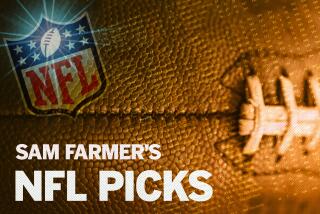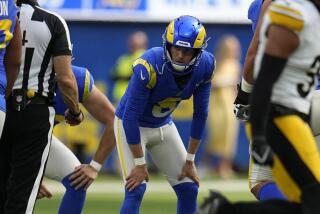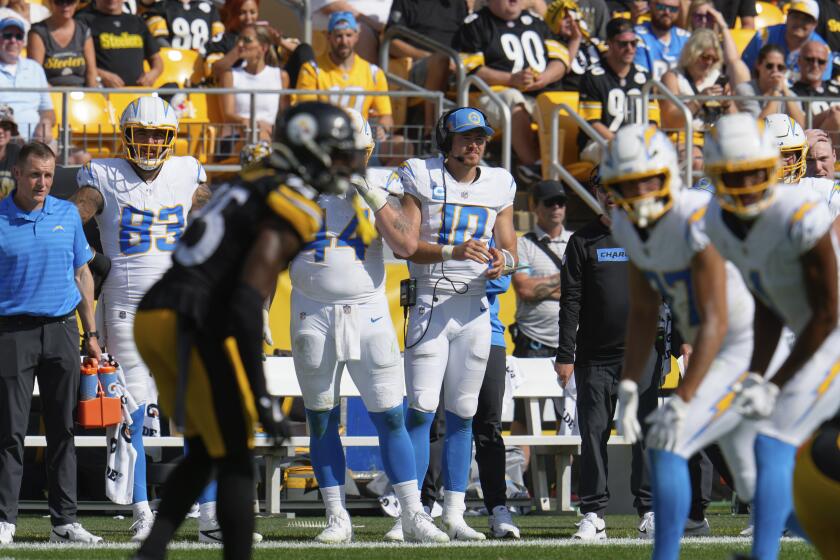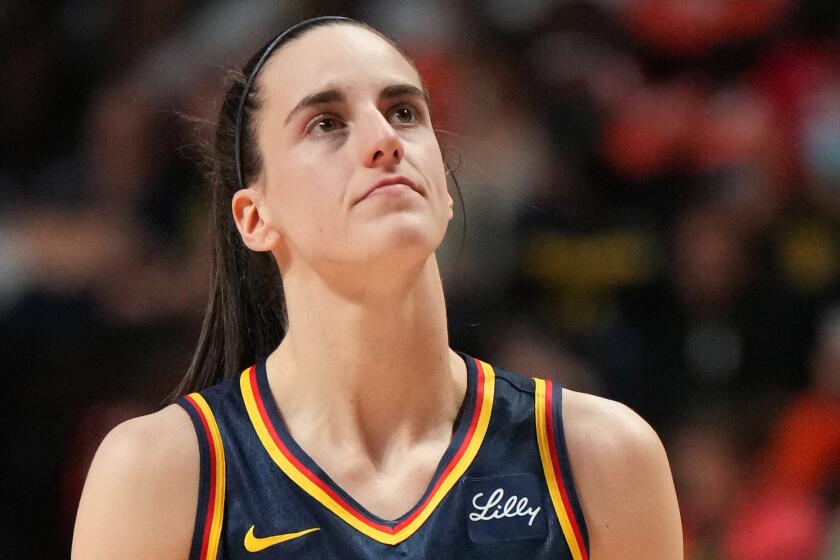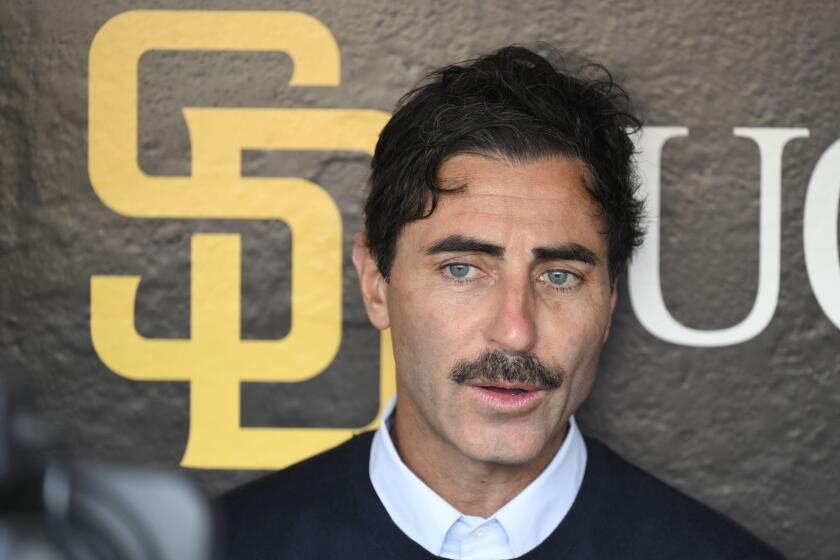Big Ben: Montana on Stilts
Longtime writer Bob Oates shares his commentary on the NFL.
Big Ben Roethlisberger of 2-0 Pittsburgh could displace Tom Brady of 1-1 New England as the NFL’s reigning most valuable quarterback this week when they meet at Pittsburgh in the featured Sunday afternoon game. During the Steelers’ fast start this season in two routs, their tall sophomore passer, who is nearly as accurate as Brady, has shown the more 2005 improvement.
Even though it was his team that let Brady down Sunday, rather than vice versa, Roethlisberger has been the wheel on the league’s most impressive ballclub. And he has the look of a champion. At a listed 6 feet 5 (it’s more like 6-7), he is Joe Montana on stilts. Lacking a big arm, as Montana did, he has much of Montana’s mobility and accuracy.
The troubling Steelers’ statistic is that they authorized only 11 Roethlisberger passes in Week 1, when they ran 41 times.
He completed nine of the 11 that day and threw two for touchdowns, as he did again in Week 2, when he completed 14 of 21.
With 32 running plays in Week 2 in a game the Steelers won at Houston, 27-7, their offense was somewhat more balanced. And balance is what they need most. The Steelers can beat the likes of Tennessee and Houston with the run-run offense they prefer — but with a running team they couldn’t win their way through the playoffs last winter. And in a passing era, it’s doubtful whether they ever can. If they’d let Roethlisberger throw more on first down, he would hit more big plays, and the Steeler running game would be less predictable and more dominant.
The Patriot Problem: Faulty Offensive Concept
AS NEW ENGLAND stumbled in the Carolina game Sunday, 27-17 — after winning two of the last three Super Bowls — it was clear that the Patriots’ problem this year is offense and that the heart of the problem is also an unbalanced offensive concept. A year ago when these same players were in the offensive lineup, the Patriots won by changing their offense quite drastically for different opponents, usually attacking with mostly quick, short passes, sometimes with long passes and sometimes (as against Peyton Manning) with running plays — to keep him off the field.
This year, by contrast, the Patriots tried to ride the same offense from one week to the next, and that’s what brought on the Week 2 disaster. In Week 1, they had turned back Oakland, 30-20, with an offense largely based on Brady’s shotgun-formation passes thrown from an empty backfield. The lineup included three or four wide receivers but no running back or blocking back.
That, however, is an unsound base formation. When an opponent can anticipate a series of such shotgun plays, it can be ready for them, as Carolina was in Week 2. The quarterback is easily blitzed and the running threat disappears. So Brady appeared to be having a bad game when, instead, he was the victim of a bad concept.
The offensive difference between the ’04 and ’05 Patriots is that their ’04 coordinator, Charlie Weis, is now at Notre Dame. They don’t, however, miss Weis’ coordinating. What they miss is his planning, which Coach Bill Belichick was in on last year, but which Belichick is too busy to oversee in detail this year. His decision not to bring in a veteran offensive coordinator this month has been, so far, a mistake.
A jumped-up quarterback coach, Josh McDainels, seems to be doing most of the coordinating at New England. He must be a capable teacher or Belichick wouldn’t have retained him since ‘01, but he is without experience for a position of that importance. And it was for leadership inexperience that Brady paid so heavily.
Brady Doesn’t Need Shotgun Plays
THE SHOTGUN is, in any case, the wrong offense for Brady. It’s true that standing back to take the snap puts a shotgun quarterback farther from blitzers, but Brady has a quicker drop than any other active passer, and, second, he is hard to blitz in any formation because he reads and releases so quickly. He has a quicker drop, in fact as well as a quicker release, than any NFL quarterback since Hall of Famer Joe Namath long ago. The modern quarterbacks he most resembles in those respects are Montana and Troy Aikman, both of them Hall of Famers and both multiple-Super Bowl winners.
The chief problem with the shotgun is that the quarterback loses the threat of his running game. He can’t hand off on quick-hitting plays, nor pitch out. Nor slip a draw to his back as he drops to throw. And he loses the threat of play-action passes. All he has left are passes from deep in the pocket — and the defense knows it.
The Panthers got to Brady in Week 2 because they’re pretty good and because any quarterback is vulnerable to a heavy rush if the defense knows it can expect to see him standing back in shotgun formation — or in any other one place. What’s equally damaging to a shotgun passer is that much of his mobility is nullified in that formation.
The truth is that the shotgun is almost always wrong for most good, quick passers, including Peyton Manning, who, nevertheless, loves it, reasoning, like all of them, that it gives him a better look at the defense and his potential receivers. What most passers seem to forget, or ignore, is that the shotgun also gives the defense a better look at them, — isolated in the pocket and stripped of their running threat.
Eagles Show Value of Runners to Passers
THE PHILADELPHIA EAGLES were demonstrating the principal advantage of sound football (versus shotgun football) when they routed the San Francisco 49ers, 42-3, in Week 2. The requirement for success in pro ball is a simultaneous run-pass threat, and the Eagles have it in their version of the West Coast offense with Donovan McNabb at quarterback and Brian Westbrook carrying the ball.
Though Westbrook is a 205-pound wide receiver playing out of position, he and several other Eagle backs, during the 49er game, ran the ball 30 times by comparison with 33 McNabb passes. The rushers gained 140 yards and one touchdown. McNabb threw five touchdowns — and as usual lined up sparingly in the shotgun.
The steady factor in the success of McNabb’s air game is the prospect of an Eagle run. Pro football’s other great passing teams all have even better running threats — the Patriots with Corey Dillon and the Indianapolis Colts with Edgerrin James — yet every time their teams line up in the shotgun, those threats are gone.
NFL’s Stern Officiating Prevents Late Hits
McNABB WAS LUCKY that he faced a rebuilding team like the 49ers in Week 2 after he had been roughed up by the Atlanta Falcons in Week 1, taking a late, illegal hit that produced a severely bruised chest reminiscent of the same injury that ruined last year for Tennessee quarterback Steve McNair. Last season, during a tough schedule, McNair was repeatedly hit and wasn’t whole again for a year.
Beyond question, McNabb was facing the same fate after going down in the first quarter of the Atlanta game, but a week later, heavily padded through the chest area, he escaped re-injury in the 49er game.
The Week 1 hit, which earned Falcon defensive lineman Chad Lavalais the league’s heaviest injury fine of the month, $7,500, was so harmful that although McNabb played later on in that game, he wasn’t thereafter same strong passer. This led to a Falcon triumph that doubtless wouldn’t have happened if the Eagle quarterback had been his old self. As a football team, the Eagles are better than the Falcons, who, in Week 2, couldn’t keep even the Seattle Seahawks from running up a 21-0 halftime lead en route to a 21-18 win.
Hits that incapacitate quarterbacks in big games can’t be prevented by $7,500 fines. It’s worth much more than $7,500 to a starter for a title contender to see a McNair or a McNabb writhing on the ground. But dirty football is difficult to punish. A suspension is the wrong fix, hurting the rascal’s team more than it bothers the offending player. Fines in the $25,000 neighborhood would be more fair but such suggestions always bring protests from members of the Players Assn. Maybe their boss, Gene Upshaw, an old Hall of Player himself, could take a stand for clean football by recommending ample fines for late hits.
Mainly, in pre-game reminders to the league’s game officials, the NFL should be insisting on sterner regulation of the rules against what defensive players call little late hits. There’s no such thing as a demonstrably harmless little late hit on a quarterback. Any late push or shove could result in serious injury when numbers of big men are flailing around.
The rules denying defensive players the right to touch a quarterback after the football has been thrown were restated not long ago by Commissioner Paul Tagliabue. Officiating enforcement, though, has more recently grown increasingly lax. To defensive players and even to some officials, it’s wrong to punish an athlete for what seems a gentle hit after a play is over. This attitude has lately brought a series of seemingly harmless late pokes and pushes to passers — and it was in such an environment that an aggressive Falcon took one more step and plowed into McNabb’s chest after the bell. NFL action could prevent that kind of play.
More to Read
Go beyond the scoreboard
Get the latest on L.A.'s teams in the daily Sports Report newsletter.
You may occasionally receive promotional content from the Los Angeles Times.

